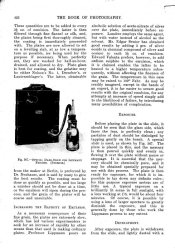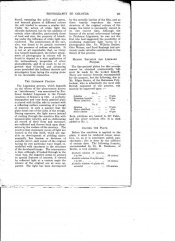Struan Gray
Member
By the term volume medium I was referring to a recording medium that records the interference fringes within the depth of its layer (and be it only a 2um "thick" layer). That would be in contrast to a surface relief structure, say a photoresist. Maybe I'm wrong but I believe you could not record a Lippmann photograph as a surface relief structure.
It could be done. With a reference beam and/or some two-photon absorbtion trickery you could generate a lateral pattern from normally incident light, but hardly worth the effort.
By the way, regarding filtered incoherent light, it's possible to make reasonably good contact copies from holograms.
That I didn't know. I assume it is because holograms are actually quite good gratings.
I re-read Ive's thesis last night, which is a model of clarity and concision:
http://www.archive.org/details/anexperimentals00ivesgoog
I also had this in my bookmarks:
http://www.scribd.com/doc/11244006/EJwall-Practical-Color-Photography-Chapter-14-Lippmann
Both emphasise that the best and most colourful view is to be had by illuminating with collimated light and viewing in conditions which minimise diffusion, both of the illuminant, and of the light scattered by the picture. I had been led astray by modern references which assert that Lippmann plates can be, or even should be, viewed with diffuse light. Ives and Wall make much more sense for viewing colours formed by diffraction fringes.
It also explains why viewing from the front with a mirror in place won't work. The mirror does indeed enhance the diffraction of the fringes, but specularity is reduced by scattering from the unstructured silver deposits in the part of the emulsion away from the near-mirror layer containing the lamellae. A mirror surface for viewing will only help if you could somehow remove all the non-lamellae silver.
Wall emphasises that the mercury should be in contact with the film for as little time as possible. That mercury is a strong foggant I knew, but I wonder if it doesn't also form an amalgam with developed-out silver and destroy fringe structures.
Ives discusses using a filtered light with the Lippmann process, and I suspect, Holmburgers, that this would be one way to improve your results. With incoherent monochromatic light the fringes are few and weak, and overlaying fringes from a whole spectrum only makes the matter worse. In a perfect world there is no reason why a pattern of silver grains in gelatin could not cope with recording a whole spectrum diffractogram, but with conventional photochemistry and the small depth of the inteference structures, there is too much mixing of the colours and you lose too much saturation.
With a conventional scene you could expose through red, green and blue bandpass filters to get a trichome Lippmann plate. You would need filters with a narrower bandpass than the standard colour separation filters though - they essentially allow the whole spectrum through when considered together. In a studio setting you could use much narrower passband filters. Three separately-gelled flashes would give you a single exposure. If you can live with longer exposures, the easiest way of getting narrowband illumination (short of spraying laser light about) would be an LED light bank with R, G, B LEDs. Disco and DJ suppply stores have some nice bright programmable banks at very reasonable prices.










 mean no colour or whatever even no profile . I´m using plates 4"x5" with PFG-03C emulsion from Slavich. Then simple lens f/4. Graphic holder and also body of this simple camera I made myself. I´m doing dark-air options. I exactly follow recommended proccesing for PFG-03C from Slavich websites but not sure if i can use the same procces for Lippmann photography this could be mine problem number one. There is one more question the record in this emulsion is phase or amplitude? I want do next try this week because I do it only in lab so may be also there is problem number two with light.
mean no colour or whatever even no profile . I´m using plates 4"x5" with PFG-03C emulsion from Slavich. Then simple lens f/4. Graphic holder and also body of this simple camera I made myself. I´m doing dark-air options. I exactly follow recommended proccesing for PFG-03C from Slavich websites but not sure if i can use the same procces for Lippmann photography this could be mine problem number one. There is one more question the record in this emulsion is phase or amplitude? I want do next try this week because I do it only in lab so may be also there is problem number two with light.

